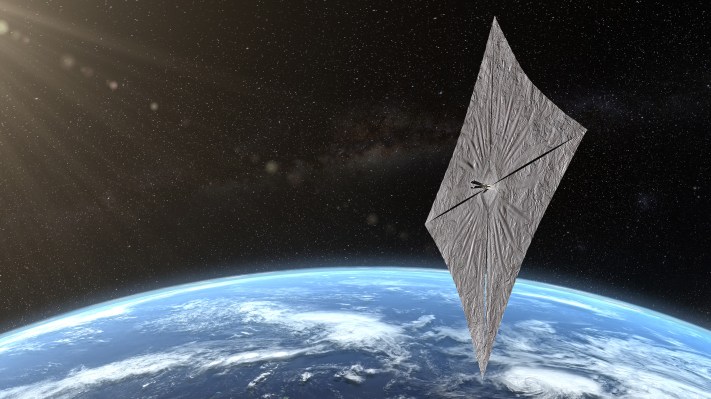The Planetary Society has launched a new mission control dashboard for LightSail 2, a crowdfunded spacecraft currently in orbit that’s going to test the performance of a true solar sail that’s moved only by the force of photons from the sun bouncing off its fabric. The dashboard provides the most up-to-date information available for anyone to check, and even download for whatever use they might have for this kind of info.
It’s definitely in keeping with the spirit of LightSail 2, which raised more than $1 million during its Kickstarter crowdfunding campaign. The project, organized and led by Bill Nye’s Planetary Society nonprofit organization, saw its second prototype spacecraft launch aboard SpaceX’s most recent Falcon Heavy rocket launch.
The LightSail 2 Mission Control dashboard will tell you when it last got data from the spacecraft, which is preparing to actually deploy its solar sail for the first time. It gets data whenever LightSail 2 is within communications range of one of the ground communications stations on Earth that The Planetary Society is working with for its research, hence the sometimes delayed info.
Visitors can see how long LightSail 2 has been on its mission, whether the solar sail is stowed or deployed, how much power it has in its onboard battery, what the temperature is inside the craft, its degree of rotation and what control mode it’s currently using to control its attitude (basically its orientation in space). You also can check out a map with the LightSail 2’s current location, and any overhead passes it’ll make relative to where you are when you’re checking out the dashboard. This is handy, because you’ll potentially be able to see the spacecraft from Earth once its sails are deployed, which is the next major mission milestone.
If you want even more information, you can hit “Download recent data” at the bottom of the dashboard to get a full archive of all the data transmitted by the spacecraft to date. There’s… a lot, and it’s beyond me, but it could be a wonderful research for amateur and professional space enthusiasts and researchers.
